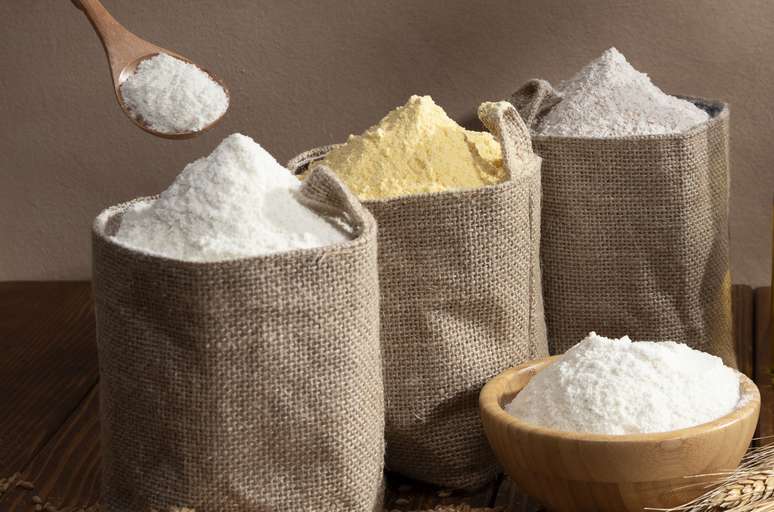The nutritionist explains the characteristics of each ingredient and how to use them in everyday life
Mainly used in the preparation of desserts, bread and pasta, Flour It is part of the daily life of many Brazilians. Input is obtained by grinding the edible part of vegetables, grains or fruits and offers various nutrients for the body.
Visiting the supermarket you may notice that there are different types of flour, the variety is so great that many consumers are confused in deciding which one best suits the recipe they are about to prepare. Thinking about this, Tamiris Pitananutritionist from Água Doce Sabores do Brasil, explains the types of flour and their benefits.
How to choose flour?
In addition to monitoring by a professional, it is necessary to know the purpose of the diet to be followed. If the goal is to lose weight, it is advisable to choose flours with more fiber, as they provide greater satiety, making the person full with a smaller quantity. Furthermore, it is important to check the nutrients described in the nutritional table of each product, to compare which type of food best suits each diet.
wheat flour
The most traditional of Brazil, it is a great source of energy, contains carbohydrates, potassium and group B vitamins. It is recommended for the production of desserts, bread and pasta in general. With its fine and smooth texture, it provides the ideal texture for these recipes. Unfortunately, people with celiac disease cannot consume this option, as wheat flour contains gluten and ingestion can interfere with nutrient absorption and cause reactions in the digestive tract.
corn flour
As an alternative for celiac patients, corn flour does not contain gluten, has more fiber than wheat flour and contains vitamin A, which helps eye health. Thanks to the amount of fibre, it helps control satiety and improves intestinal function. It can be used in couscous, polenta, farofa and other savory preparations.
Cassava flour
Also used widely by Brazilians, cassava flour has a high amount of carbohydrates, fiber and vitamin C. It is sold in fine and coarse options, depending on the needs of each recipe. It can be used to prepare tarts, desserts and farofa. Its consistency leaves the dish crunchy and gives a unique flavour.
oatmeal
Oat flour is a versatile and healthy type, as it contains fiber and helps reduce blood cholesterol. For those who opt for this variant, it is important to be careful when adding other ingredients, since it is necessary to have a balance in relation to the amount of fat used, so that the recipe has the ideal consistency. It can be used in pancakes, porridge, cakes and pasta. Many people also use it pure to eat with fruit. It is sold in thin or thick flakes.
Rice flour
Easily available and at an affordable price, rice flour does not contain gluten, has fibre, is considered a source of energy and has a low glycemic index. Additionally, it helps heart health and intestinal function. It can be used in bread, porridge, cakes and smoothies.
Coconut flour
A good substitute for wheat flour is coconut flour, which is widely used in low-carb recipes, making it a great option for restrictive diets. It has fiber, is low in carbohydrates and does not contain gluten, so it is also an alternative for people with celiac disease. Ideal for cakes, bread, tarts and even drinks.
Chia flour
Widely used by vegetarians and vegans, chia flour replaces eggs in several recipes. Furthermore, it helps intestinal function, reduces cholesterol levels in the body and aids muscle recovery. With antioxidant nutrients such as magnesium, potassium and phosphorus, the flour is ideal for cakes, breads, salads and smoothies. It is also used in fruit consumption.
Eggplant flour
Ideal for those who want to lose weight, aubergine flour is rich in fibre, reduces bad cholesterol and helps control blood sugar levels. It also helps skin and eye health, as it contains vitamins A and C. It is generally used in cakes, smoothies or savory dishes.
Source: Terra
Ben Stock is a lifestyle journalist and author at Gossipify. He writes about topics such as health, wellness, travel, food and home decor. He provides practical advice and inspiration to improve well-being, keeps readers up to date with latest lifestyle news and trends, known for his engaging writing style, in-depth analysis and unique perspectives.








